How to Use Your Body as a Weapon in Self-Defense Techniques
In today's world, personal safety is a growing concern for many individuals. The ability to defend oneself is not just about strength or size; it's about using your body effectively and understanding the techniques that can empower you in a dangerous situation. Self-defense isn't merely a physical confrontation; it’s a blend of awareness, strategy, and technique that can turn the tide in your favor. So, how can you harness your body as a weapon? Let’s explore the art of self-defense and how to make the most of your natural abilities.
Self-defense is more than just throwing punches or kicks; it’s a complex interplay of legal and ethical considerations. You must understand the laws regarding self-defense in your area, as they vary significantly. For instance, in some places, you might be legally justified in using physical force only when you believe there is an imminent threat to your safety. Therefore, it is crucial to be aware of your surroundings and assess situations correctly. This understanding can prevent unnecessary confrontations and protect you from legal repercussions. Remember, self-defense should be a last resort; the primary goal is to escape and avoid conflict whenever possible.
Effective self-defense hinges on proper body mechanics. Think of your body as a finely-tuned machine; every part must work in harmony to maximize your effectiveness. By leveraging your body weight, maintaining balance, and mastering movement, you can deliver powerful strikes and solid defenses. For example, when you throw a punch, it's not just your arm doing the work; it's your entire body generating force. The key is to engage your core, shift your weight, and follow through with your strikes. This technique not only increases the power of your hits but also helps you maintain stability, making it harder for an attacker to knock you off balance.
A strong stance and good posture are foundational for self-defense. Imagine standing like a tree, rooted firmly in the ground; your feet should be shoulder-width apart, knees slightly bent, and weight evenly distributed. This position allows you to react quickly to any threat. A proper stance also makes it easier to pivot and move in any direction, enhancing your ability to evade attacks. When you're in a strong posture, you project confidence, which can sometimes deter potential aggressors before a confrontation even begins.
Footwork is crucial in self-defense scenarios. Just like a dancer moves gracefully across the stage, your footwork should be agile and purposeful. Quick lateral movements can help you evade an attack, while stepping back can create distance between you and an aggressor. Here are a few essential footwork techniques to practice:
- Side Shuffle: This movement allows you to quickly change your position without losing balance.
- Step Back: Create distance by stepping back when an attacker approaches.
- Pivoting: This technique helps you turn your body while maintaining a strong stance, allowing for better angles in defense or attack.
Breathing techniques can enhance your performance in self-defense. In high-stress situations, it’s easy to feel overwhelmed. However, controlled breathing can help you stay calm and focused. Practice inhaling deeply through your nose, holding for a moment, and exhaling slowly through your mouth. This technique not only helps regulate your heart rate but also clears your mind, allowing you to think clearly during a confrontation.
Identifying and targeting vulnerable areas on an attacker can significantly increase your chances of successfully defending yourself. Focus on key pressure points such as the eyes, nose, throat, and groin. Striking these areas can cause significant pain and disorientation, giving you a critical advantage. Remember, the goal is to incapacitate your attacker long enough to escape, not to engage in a prolonged fight.
Sometimes, you may need to use what's around you. Everyday objects can become effective self-defense tools if you know how to utilize them. Think of items like keys, pens, or even a handbag; these can provide an edge in a critical situation. For instance, holding your keys between your fingers can create a makeshift weapon that can inflict damage while also allowing you to maintain a grip. The key here is to stay aware of your environment and be ready to improvise when necessary.
Household items can serve as unexpected weapons. Consider using:
- A broomstick: It can be used to keep an attacker at bay.
- A spray bottle: Filled with water or any liquid, it can temporarily blind an attacker.
- Furniture: A chair can be used as a barrier or even a weapon if swung properly.
Your surroundings can be advantageous in a self-defense scenario. Look for exits, obstacles, or anything that can provide cover. For example, if you’re in a crowded area, use the crowd to your advantage by moving quickly through it to escape. Additionally, if you can position yourself near a solid object, it can serve as a shield against an attacker.
Repetition and practice are essential for mastering self-defense techniques. Just like learning to ride a bike, the more you practice, the more confident and skilled you become. Regular training helps build muscle memory, allowing you to react instinctively in a stressful situation. Consider enrolling in a self-defense class or joining a local martial arts group to hone your skills.
Choosing the right self-defense class can make a significant difference. Look for programs that focus on practical techniques and real-world scenarios. Check reviews, ask for recommendations, and ensure the instructors have relevant experience. A good class will help you build confidence and teach you how to use your body effectively in self-defense.
Role-playing can enhance your preparedness. Simulating various self-defense scenarios with a partner can improve your reaction time and decision-making skills. Practice different types of attacks and responses, so you feel ready to handle real-life situations. This type of training can help you become more comfortable with your techniques and boost your confidence.
Q: Is self-defense training only for women?
A: Absolutely not! Self-defense training is beneficial for everyone, regardless of gender. It empowers individuals to protect themselves and build confidence.
Q: Do I need to be physically fit to learn self-defense?
A: While being fit can help, self-defense techniques can be adapted to suit all fitness levels. The focus is on technique and awareness, not just brute strength.
Q: What should I do if I feel threatened?
A: Trust your instincts. If you feel threatened, try to remove yourself from the situation as quickly as possible. If that's not an option, use the techniques you've learned to defend yourself.
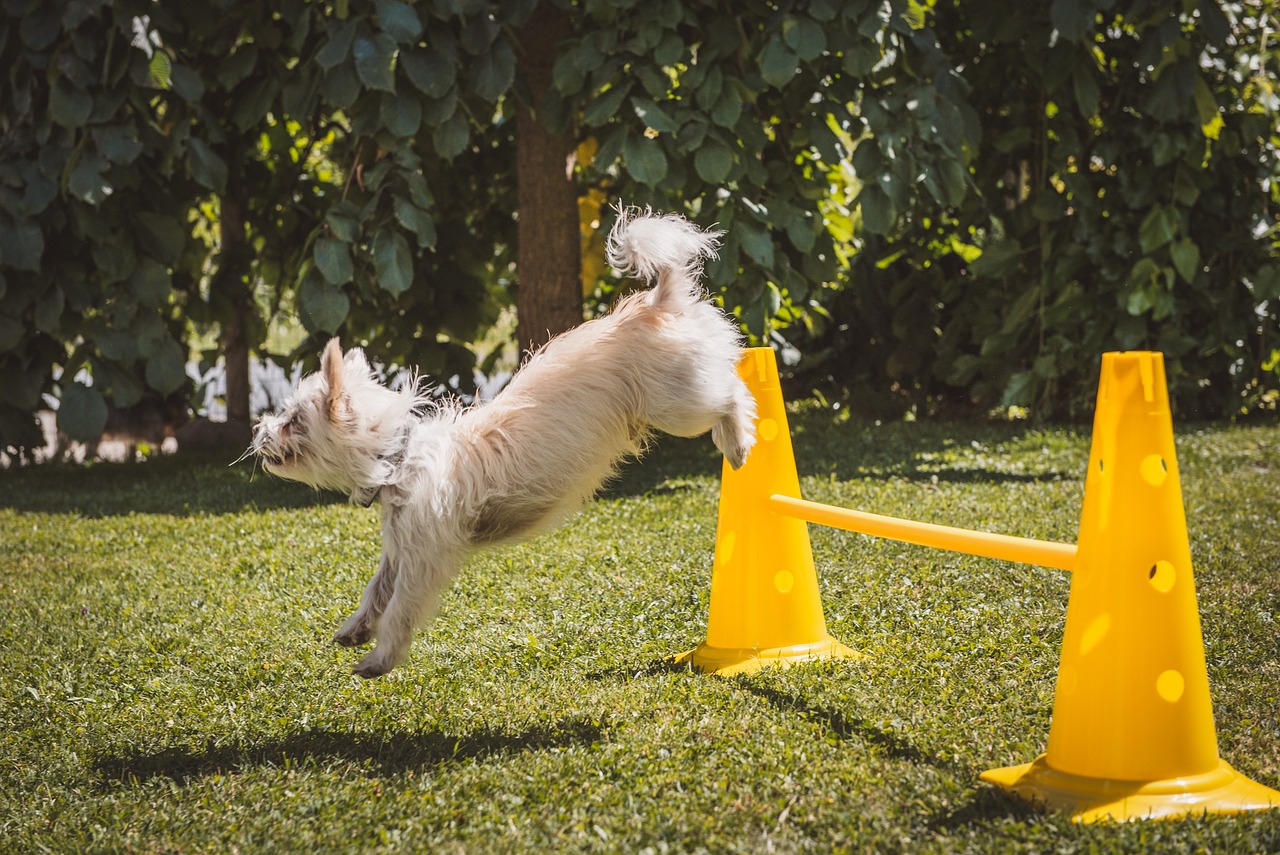
Understanding Self-Defense Principles
When we think about self-defense, our minds often jump to flashy martial arts moves or intense fight scenes from movies. However, the reality is that self-defense is much more about awareness and understanding than it is about brute strength or complex techniques. At its core, self-defense involves principles that guide your actions and decisions in a potentially dangerous situation. It’s crucial to grasp these principles to ensure not only your safety but also that you act within the law.
First and foremost, you need to understand the legal framework surrounding self-defense. Laws vary from one place to another, but generally, you are allowed to use reasonable force to protect yourself from imminent harm. This means that if someone is attacking you, you can defend yourself, but the level of force you use must be proportionate to the threat. For instance, if someone pushes you, responding with a full-on tackle may not be deemed reasonable. Always remember that self-defense should be a last resort, and de-escalation should be your first line of defense.
Another essential principle is the concept of proportionality. This means that your response to an attack should match the level of threat you are facing. If someone is merely verbally threatening you, responding with physical violence is not justifiable. Understanding this can help you navigate the often murky waters of self-defense situations. In practice, this could mean using verbal de-escalation techniques or simply walking away from a confrontation when possible.
Moreover, self-defense is not just a physical act; it’s also a mental game. Being aware of your surroundings and recognizing potential threats before they escalate is vital. Here are some key points to consider:
- Stay Alert: Always be aware of your surroundings. Avoid distractions like your phone when walking in unfamiliar areas.
- Trust Your Instincts: If something feels off, it probably is. Don’t hesitate to remove yourself from a situation that makes you uncomfortable.
- Know Your Rights: Familiarize yourself with local laws regarding self-defense to ensure you know what is permissible.
While understanding these principles is crucial, it’s equally important to recognize the ethical considerations involved in self-defense. Engaging in a physical altercation can have serious consequences, not just for you but also for the person you’re defending yourself against. It’s vital to consider the long-term implications of your actions. For instance, if you injure someone severely in self-defense, you may face legal repercussions, even if your intentions were to protect yourself. Thus, the ethical dimension of self-defense encourages you to think before you act.
In summary, understanding the principles of self-defense involves a combination of legal knowledge, awareness, proportionality, and ethical considerations. By grasping these concepts, you can enhance your ability to protect yourself while minimizing unnecessary risks. Remember, self-defense is not just about fighting; it's about making informed decisions that prioritize your safety and well-being.

Body Mechanics in Self-Defense
When it comes to self-defense, understanding body mechanics is crucial. It’s not just about throwing punches or kicks; it’s about how you use your entire body to enhance your effectiveness in a confrontation. Imagine your body as a finely tuned machine, where every part works in harmony to deliver maximum impact. By learning to leverage your body weight, maintain balance, and move efficiently, you can transform your physical capabilities into powerful self-defense techniques.
One of the key aspects of body mechanics is your center of gravity. This is the point in your body where your weight is balanced. Keeping your center of gravity low, especially during a confrontation, allows you to maintain stability and react more quickly. Think of it like a tree; the lower the branches, the more stable the tree is in a storm. If you can keep your center of gravity low, you’ll be able to withstand attacks and respond effectively.
A strong stance and good posture are foundational for effective self-defense. Your stance should be wide enough to provide balance while allowing for quick movements. Imagine standing like a boxer, with your feet shoulder-width apart, knees slightly bent, and weight distributed evenly. This posture not only prepares you to defend yourself but also makes it easier to launch a counterattack. Remember, it’s all about being ready—you want to be like a coiled spring, ready to unleash your energy at a moment’s notice.
Now, let’s talk about footwork. Your feet are your primary means of movement, and mastering footwork is essential in self-defense. Good footwork allows you to evade attacks, reposition yourself, and create angles for your strikes. Think of your feet as the wheels of a car; without them, you’re stuck in one place. Practice moving in all directions—forward, backward, and sideways. The better your footwork, the more options you’ll have when it comes to defending yourself.
Here are a few footwork techniques to consider:
- Shuffling: This involves small, quick steps to move in any direction while keeping your stance stable.
- Creeping: A low, stealthy movement that allows you to approach or retreat without drawing attention.
- Pivoting: This technique involves rotating on your lead foot to change direction quickly.
Believe it or not, your breath plays a significant role in self-defense. When faced with a threatening situation, it’s easy to panic and lose control. However, controlled breathing can help you stay calm and focused. Think of your breath as the anchor that keeps you grounded amidst chaos. Practice inhaling deeply through your nose and exhaling slowly through your mouth. This technique not only calms your nerves but also provides you with the oxygen needed for physical exertion.
To illustrate the importance of breathing, consider this analogy: when you’re in a high-pressure situation, your body is like a car running on empty. If you don’t take the time to refuel—through proper breathing—you’ll stall when you need to accelerate. So, make it a habit to practice your breathing techniques regularly, especially during training sessions.
Lastly, let’s discuss the importance of targeting vulnerable areas on an attacker. Knowing where to strike can dramatically increase your chances of successfully defending yourself. Vulnerable areas include the eyes, throat, solar plexus, and groin. A well-placed strike to any of these areas can incapacitate an attacker and give you the opportunity to escape. Remember, self-defense is not about engaging in a fight; it’s about creating an opportunity to get away safely.
In conclusion, mastering body mechanics in self-defense is not just about physical strength; it’s about understanding how to use your body effectively. By focusing on your stance, footwork, breathing, and targeting techniques, you can enhance your self-defense skills and feel more confident in your ability to protect yourself.
Q1: Do I need to be physically strong to defend myself?
A1: No, self-defense techniques can be effective regardless of your physical strength. It’s more about technique and strategy.
Q2: How often should I practice self-defense techniques?
A2: Regular practice is essential. Aim for at least once a week to build muscle memory and confidence.
Q3: Can I use self-defense techniques in any situation?
A3: Self-defense techniques should only be used when necessary to protect yourself from harm. Always consider the legal implications.

Stance and Posture
When it comes to self-defense, are your first lines of defense. Think of your body as a coiled spring; if you're not positioned correctly, you won't be able to unleash your full potential when the moment arises. A strong stance provides stability and readiness, allowing you to react swiftly to any threat. So, let’s break it down!
Imagine standing with your feet shoulder-width apart, your knees slightly bent, and your weight evenly distributed. This is your foundation. It’s like building a house: if the foundation is shaky, the entire structure is at risk. Keeping your feet planted firmly on the ground helps you maintain balance, making it harder for an attacker to knock you off your feet. Additionally, your posture plays a pivotal role. Stand tall and confident, with your shoulders back and head held high. This not only projects confidence but also prepares your body to react effectively.
Now, let’s talk about the importance of alignment. Your body should be aligned properly to allow for quick movements. For instance, when facing an opponent, angle your body slightly to the side. This not only makes you a smaller target but also positions you to move quickly in any direction. Picture a cat ready to pounce; it’s all about being alert and prepared.
In terms of hand positioning, keep your hands up, near your face, in a guard position. This is your protective shield. It's essential to keep your elbows tucked in, as this protects your ribs while allowing you to strike or block effectively. Think of your arms as the branches of a tree; they should be flexible yet strong, ready to either fend off an attack or deliver a powerful blow.
Here’s a quick recap of key points to remember about stance and posture:
- Feet shoulder-width apart: Provides stability and balance.
- Weight distribution: Keep your weight centered for quick movement.
- Body angle: Position yourself sideways to present a smaller target.
- Hands up: Protect your face and prepare for action.
- Elbows in: Guard your ribs and maintain a strong defense.
Ultimately, mastering your stance and posture is about preparation. Just like a dancer needs to be aware of their body to perform flawlessly, you must be conscious of your body mechanics to defend yourself effectively. Regular practice will help you internalize these principles, making them second nature when you need them the most. So, next time you find yourself in a self-defense class, pay close attention to how you stand and hold yourself. It could make all the difference!
Q: Why is stance so important in self-defense?
A: A proper stance provides stability, balance, and readiness to react quickly to any threat. It forms the foundation of effective self-defense techniques.
Q: How can I improve my posture for self-defense?
A: Practice standing tall with your shoulders back and head up. Regularly engage in exercises that strengthen your core and improve your overall body alignment.
Q: What should I do if I'm caught off guard?
A: Even if you’re caught off guard, try to regain your stance quickly. Focus on your breathing and remember to keep your hands up to protect yourself while looking for an opportunity to escape.
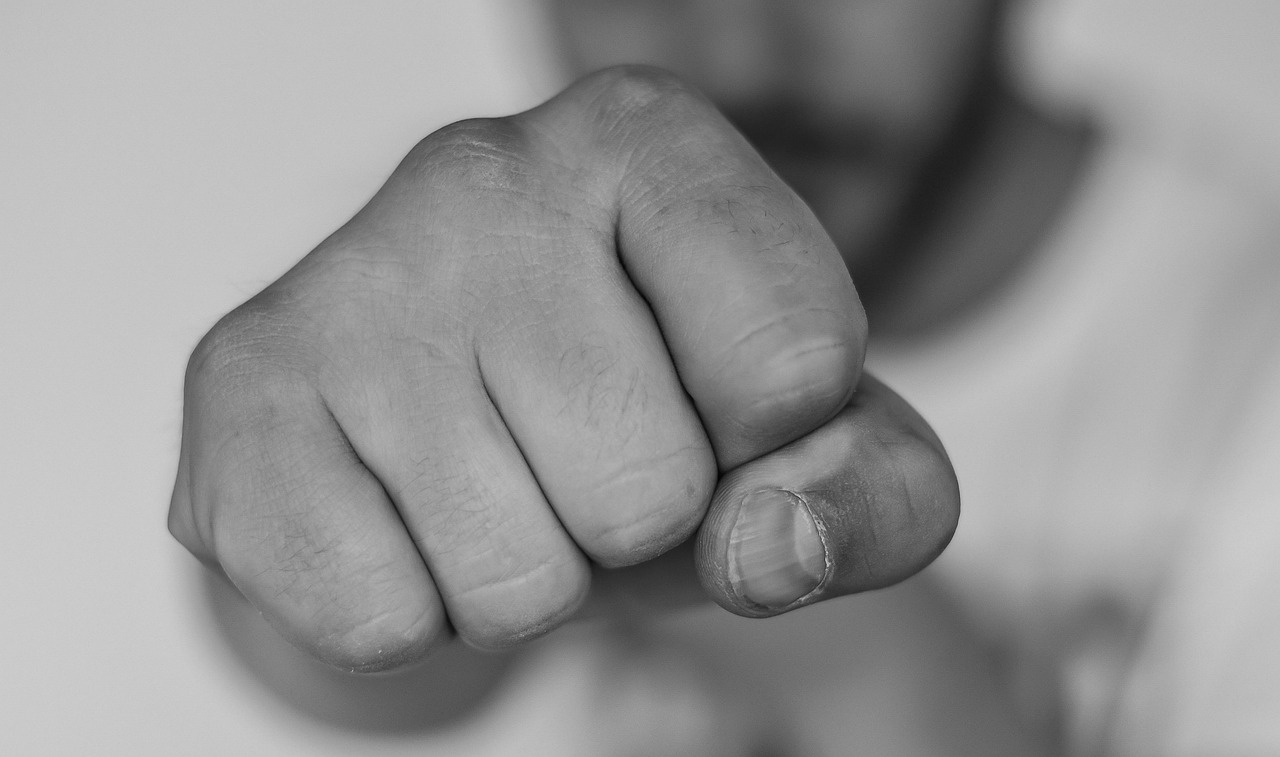
Footwork Techniques
When it comes to self-defense, footwork is often the unsung hero of effective techniques. Imagine being in a confrontation where your ability to move swiftly can mean the difference between safety and danger. Proper footwork allows you to create distance, evade attacks, and position yourself advantageously. It’s not just about how you stand; it’s about how you move. Think of it like a dance—each step is deliberate, and each movement has a purpose.
First, let’s talk about the basic stance. A strong, balanced stance is your foundation. You want your feet shoulder-width apart, knees slightly bent, and your weight evenly distributed. This position not only provides stability but also prepares you to move in any direction quickly. When you’re in this ready stance, you’re like a coiled spring, ready to unleash your energy at a moment’s notice.
Now, let’s dive into some specific footwork techniques. One of the most essential is the step-and-slide technique. This involves taking a step forward with one foot while sliding the other foot to maintain balance. It’s a great way to close the distance on an attacker while keeping your center of gravity low. This technique is particularly useful in situations where you need to engage quickly without losing your balance.
Another important technique is the pivot. Pivots allow you to change direction rapidly, making it harder for an attacker to predict your next move. By pivoting on your lead foot, you can quickly turn and face your opponent, creating opportunities to escape or counterattack. This is especially effective if you find yourself being flanked or surrounded.
Additionally, lateral movement—or side-stepping—can be a game-changer. Instead of moving directly backward, which can make you more vulnerable, side-stepping allows you to evade an attack while remaining in a position to counter. Picture a matador gracefully dodging a bull; it’s all about timing and precision. By practicing lateral movements, you can improve your agility and make it more difficult for an attacker to land a hit.
For those who might find themselves in a tight space, shuffling is another valuable technique. This involves small, quick steps to reposition yourself without losing balance. It’s particularly useful in crowded areas where you might not have the luxury of room to maneuver. The key is to keep your feet close to the ground, allowing for quick adjustments without overextending yourself.
Lastly, remember that footwork isn’t just about movement; it’s also about awareness. Being conscious of your surroundings and the positioning of your attacker can give you a significant advantage. Practice makes perfect, and incorporating footwork drills into your training routine can enhance your reflexes and overall effectiveness in a self-defense situation.
In conclusion, mastering footwork techniques is crucial for anyone looking to improve their self-defense skills. It’s about more than just moving your feet; it’s about creating an opportunity, staying balanced, and being ready for anything. So, lace up those shoes and start practicing—your safety may depend on it!
- Why is footwork important in self-defense? Footwork allows you to evade attacks, maintain balance, and position yourself for effective counterattacks.
- How can I improve my footwork? Regular practice, drills, and incorporating footwork techniques into your training can significantly enhance your agility and responsiveness.
- Are there specific exercises for footwork? Yes! Jumping rope, ladder drills, and shadowboxing are excellent ways to improve your footwork.

Breathing and Relaxation
When it comes to self-defense, many people think about physical strength and combat techniques. However, play a crucial role that often gets overlooked. Imagine being in a high-stress situation where your heart is racing, and panic is setting in. How do you maintain control? The answer lies in your breath. By mastering breathing techniques, you can not only calm your nerves but also enhance your performance in a confrontation.
In self-defense scenarios, stress can cloud your judgment and slow your reaction time. Controlled breathing helps to keep your mind clear and focused. Think of your breath as an anchor; it keeps you grounded when everything around you feels chaotic. When you breathe deeply and rhythmically, you signal to your body that it’s time to relax, even in the face of danger. This can be a game-changer in how you respond to an attack.
Here are some effective breathing techniques that can help you during self-defense situations:
- Diaphragmatic Breathing: This involves breathing deeply into your diaphragm rather than shallowly into your chest. It increases oxygen flow and can significantly reduce anxiety.
- 4-7-8 Breathing: Inhale for 4 seconds, hold your breath for 7 seconds, and exhale for 8 seconds. This technique is excellent for calming your mind and body.
- Box Breathing: Inhale for 4 seconds, hold for 4 seconds, exhale for 4 seconds, and hold again for 4 seconds. This method is particularly useful for maintaining focus.
In addition to breathing techniques, relaxation strategies can help you prepare mentally for a potential confrontation. Practicing mindfulness and visualization can create a mental buffer against stress. Imagine yourself responding effectively and confidently in various scenarios. This mental rehearsal can help you feel more prepared and less anxious when faced with real-life situations.
Lastly, remember that relaxation isn't just about being calm; it's about being ready. A relaxed body is more agile, responsive, and capable of executing self-defense moves effectively. So, the next time you think about self-defense, don't just focus on the physical techniques. Pay attention to your breath and learn to relax. It could be the difference between being a victim and being a survivor.

Targeting Vulnerable Areas
When it comes to self-defense, knowing where to strike can make all the difference. Your body is a powerful tool, but understanding how to maximize its effectiveness involves identifying and targeting vulnerable areas on an attacker. These areas are often less protected and can incapacitate an assailant with a well-placed strike. Think of it like aiming for the bullseye in archery; hitting the right spot can yield the best results.
Some of the most effective targets include:
- The Eyes: Aiming for the eyes can cause temporary blindness, giving you a chance to escape.
- The Nose: A sharp jab to the nose can disorient an attacker and cause significant pain.
- The Throat: Striking the throat can disrupt breathing and incapacitate someone quickly.
- The Solar Plexus: A blow to this area can knock the wind out of an assailant and leave them vulnerable.
- The Groin: A classic target, a strike here can be both shocking and debilitating.
Understanding these vulnerable areas is essential, but it's equally important to practice how to strike them effectively. For instance, when targeting the throat, a quick, upward motion with your palm can be much more effective than a punch. This technique not only increases your chances of hitting the target but also minimizes the risk of injuring your hand.
Moreover, it's vital to remember that the goal of self-defense is not to engage in a prolonged fight; rather, it's about creating an opportunity to escape. Therefore, once you identify a vulnerable area, your reaction should be swift and decisive. Think of it as a chess game; you want to make your move strategically and then get out of the way before your opponent can counter.
In addition to striking, consider using your body weight to your advantage. For example, if you're in a close confrontation, leveraging your weight against an attacker's vulnerable area can amplify the effectiveness of your strike. This principle is akin to using a lever; the closer you are to the pivot point (in this case, the target), the more force you can generate.
Finally, remember that self-defense is not just about physical techniques; it's also about awareness and mental preparedness. The more you understand your environment and potential threats, the better equipped you'll be to react effectively. Visualize scenarios where you may need to defend yourself, and practice how you would respond. This mental rehearsal can be just as crucial as physical training.

Improvisation with Everyday Objects
When it comes to self-defense, the idea of using your body as a weapon is just the tip of the iceberg. Sometimes, the best defense can come from the most unexpected sources—everyday objects that you might overlook in your daily life. Think about it: how often do you walk past items that could easily become tools for your safety? In a critical situation, your surroundings can transform ordinary objects into powerful allies. Imagine a pen turning into a striking tool or a bag becoming a shield. The key is to stay aware and think creatively!
Everyday objects can serve as effective self-defense tools if you know how to use them. For example, a keychain can be held between your fingers to create a makeshift weapon, while a water bottle can be used to strike or even distract an attacker. The beauty of these items lies in their accessibility; they’re usually right at your fingertips. Here are a few common household items that can be repurposed for self-defense:
- Umbrella: A sturdy umbrella can be used to block or strike.
- Flashlight: Not only can it illuminate dark areas, but it can also be used to hit an assailant.
- Scarf or Belt: These can be used to restrain or distract an attacker.
Additionally, your environment plays a crucial role in improvisation. Consider your surroundings: benches, walls, or even the ground can be utilized to your advantage. If you find yourself in a tight situation, think about how you can use the structure around you. For instance, backing yourself against a wall can prevent an attacker from approaching from behind, giving you a moment to assess your options. Or, if you’re near a staircase, you can use the elevation to your advantage, making it harder for someone to reach you.
Another aspect to consider is the element of surprise. If you can catch an attacker off guard, you increase your chances of escaping unharmed. Using everyday objects not only provides you with tools but also gives you the opportunity to create confusion. For example, if you’re in a café, tossing a cup of hot coffee can momentarily distract someone, giving you precious seconds to make your escape. Remember, it’s not always about brute strength; sometimes, it’s about being clever and resourceful.
In summary, improvisation with everyday objects can significantly enhance your self-defense capabilities. The next time you walk through your home or office, take a moment to assess what could be used as a tool for self-defense. By being aware of your surroundings and thinking creatively, you can turn the mundane into something extraordinary, empowering yourself with the knowledge that you have options. Remember, your safety is paramount, and every little bit helps when it comes to protecting yourself!
Q: What should I do if I can't find anything to use for self-defense?
A: Stay calm and focus on using your body. Remember the techniques you've learned, such as targeting vulnerable areas or creating distance between you and the attacker.
Q: Are there specific items I should always carry for self-defense?
A: While it's good to have a self-defense tool, being aware of your surroundings and being prepared to use what's available is just as important. Items like a whistle, personal alarm, or even a sturdy pen can be effective.
Q: How can I practice using everyday objects for self-defense?
A: Consider enrolling in a self-defense class that incorporates the use of everyday items. You can also practice scenarios at home with friends or family to build confidence.
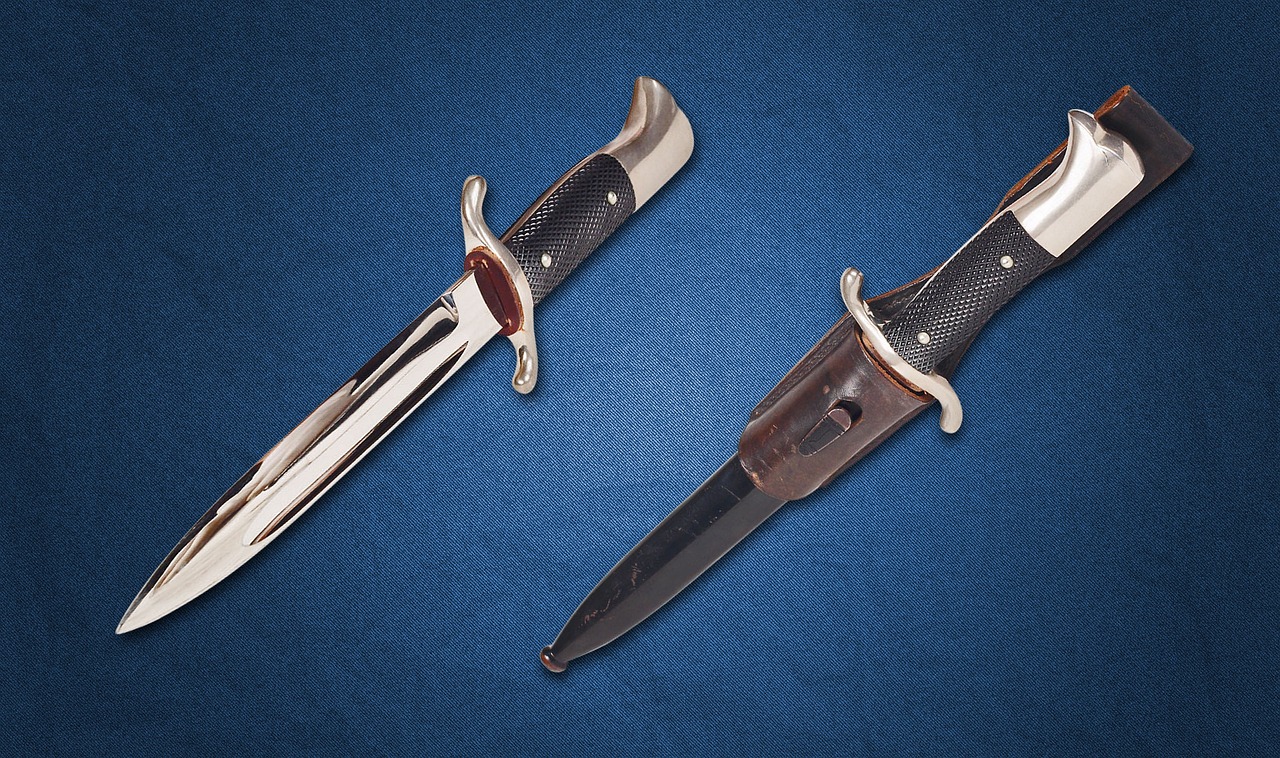
Common Household Items
When it comes to self-defense, the best weapon you have is often right under your nose—your household items! You might be surprised to learn that everyday objects can be transformed into effective tools for protection. Imagine being in a tight spot, and instead of panicking, you grab a nearby item and turn it into your ally. It's all about creativity and quick thinking. Let's explore some common household items that can serve as unexpected weapons in a self-defense situation.
First up, we have the trusty kitchen knife. This isn't just a tool for slicing vegetables; it's a sharp defender when used correctly. If you find yourself in a dangerous situation, holding a knife can create distance between you and an attacker. Just remember, using a knife requires a steady hand and a clear mind, so practice caution.
Another item that often goes unnoticed is a mug or glass. In a pinch, a sturdy mug can be wielded to strike an assailant, while a glass can be used to create a distraction. Imagine throwing a glass of water in someone's face—it not only disorients them but also gives you a moment to escape. Always be aware of your surroundings and the items within arm's reach.
Don't overlook the power of a backpack or purse. These can be used to shield yourself from blows or to create a barrier between you and an attacker. If you need to make a quick getaway, simply swing your bag to create space. Plus, if your bag is heavy enough, it can serve as an improvised weapon if you need to strike.
For those who love DIY projects, consider keeping a spray bottle filled with water or a homemade pepper spray. A quick spray to the eyes can provide you with precious seconds to escape. Just be sure to check the laws in your area regarding self-defense sprays to stay on the right side of the law.
Lastly, your phone is not just for communication; it can also be a self-defense tool. Not only can you call for help, but you can also use it to record an incident or even as a distraction. Blasting loud music or an alarm can draw attention to your situation, which is often enough to deter an attacker.
In summary, it's crucial to recognize that self-defense doesn't always require martial arts training or expensive gadgets. Sometimes, the most effective tools are the ones you already have at home. By being aware of your surroundings and thinking creatively, you can turn ordinary items into powerful allies when it matters most.
Q: Can I really use household items for self-defense?
A: Absolutely! Many common household items can be effective in self-defense situations if used correctly and with intention.
Q: Are there any risks involved in using household items for self-defense?
A: Yes, there are risks. It's essential to be aware of the legal implications and ensure that you're prepared to use these items responsibly.
Q: What should I do if I feel threatened?
A: Trust your instincts. If you feel threatened, seek safety, use your surroundings to your advantage, and consider using any nearby items as a means of defense.
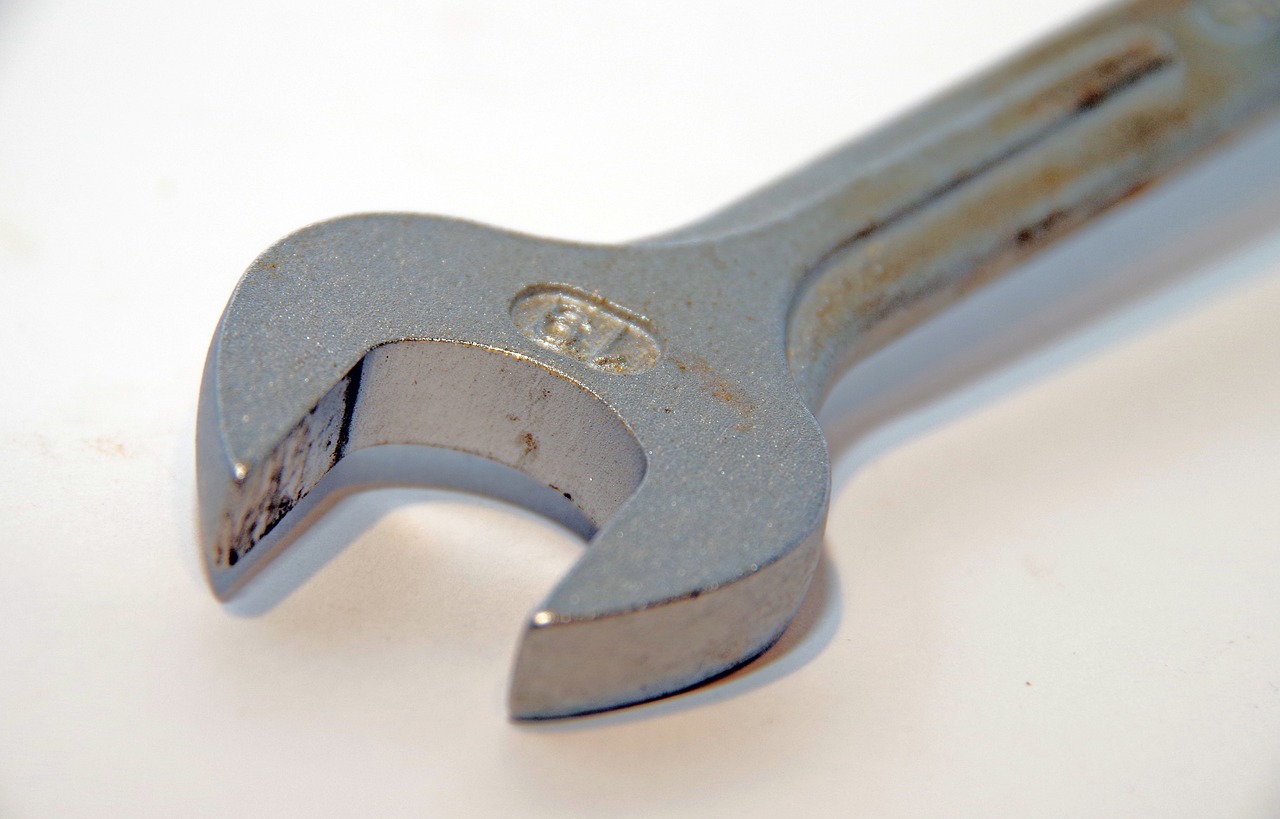
Using Your Environment
When it comes to self-defense, one of the most powerful tools at your disposal is your environment. Just like a chess player uses the board to their advantage, you can utilize your surroundings to enhance your chances of safety. Imagine walking down a busy street; the hustle and bustle can be intimidating, but it also offers numerous opportunities to protect yourself. The key is to be aware of what’s around you and how you can use it to your advantage.
For instance, think about the different elements in your environment. Are there any obstacles you can use to block an attacker? A parked car can serve as a shield, while a nearby bench might give you a place to put some distance between you and a potential threat. By positioning yourself strategically, you can create barriers that can protect you. Moreover, using elevation to your advantage can also be beneficial. If you're on a staircase, for example, you can use the steps to maintain a higher ground, making it harder for an attacker to reach you.
Another aspect to consider is the use of light and shadows. Brightly lit areas can deter attackers, while dimly lit spots might provide cover for them. As you navigate your surroundings, always look for well-lit paths and avoid dark corners. If you find yourself in a precarious situation, try to move towards areas with more visibility where you can attract attention or seek help. Additionally, using noise to your advantage can be a game changer. Making loud noises can draw attention to your situation, potentially scaring off an attacker or alerting passersby to your need for help.
It’s also worth noting that everyday objects can become invaluable in a self-defense situation. Here are some common items you might encounter:
- Keys: A set of keys can be used to jab or scratch an attacker.
- Umbrellas: Not only can they shield you from the rain, but they can also be wielded as a barrier.
- Bags: A backpack can be used to block strikes or even throw off an assailant's balance.
Being aware of your environment means not only recognizing these objects but also being prepared to use them. Practice scenarios where you might need to improvise, as this will help you respond more effectively in real-life situations. Remember, the goal is to escape and seek safety, not to engage in a fight.
In conclusion, using your environment effectively means being observant and creative. With a little bit of awareness and quick thinking, you can turn everyday situations into opportunities for self-defense. Whether it's leveraging obstacles, using noise, or improvising with objects around you, your surroundings can significantly impact your ability to stay safe. So next time you step out, take a moment to scan your environment and think about how you can use it to your advantage. After all, in the game of self-defense, the environment can be your greatest ally.
Q: How can I improve my awareness of my surroundings?
A: Start by practicing mindfulness. Pay attention to the people and objects around you as you walk. Make it a habit to notice exits, potential hazards, and safe places you can go in case of an emergency.
Q: What should I do if I feel threatened in a public space?
A: Trust your instincts. If you feel unsafe, try to move towards a crowded area or a place with good visibility. Make noise to attract attention, and don’t hesitate to ask for help from bystanders.
Q: Are there specific self-defense classes that focus on using the environment?
A: Yes, many self-defense programs incorporate environmental awareness into their training. Look for classes that emphasize situational awareness and practical techniques for using surroundings effectively.
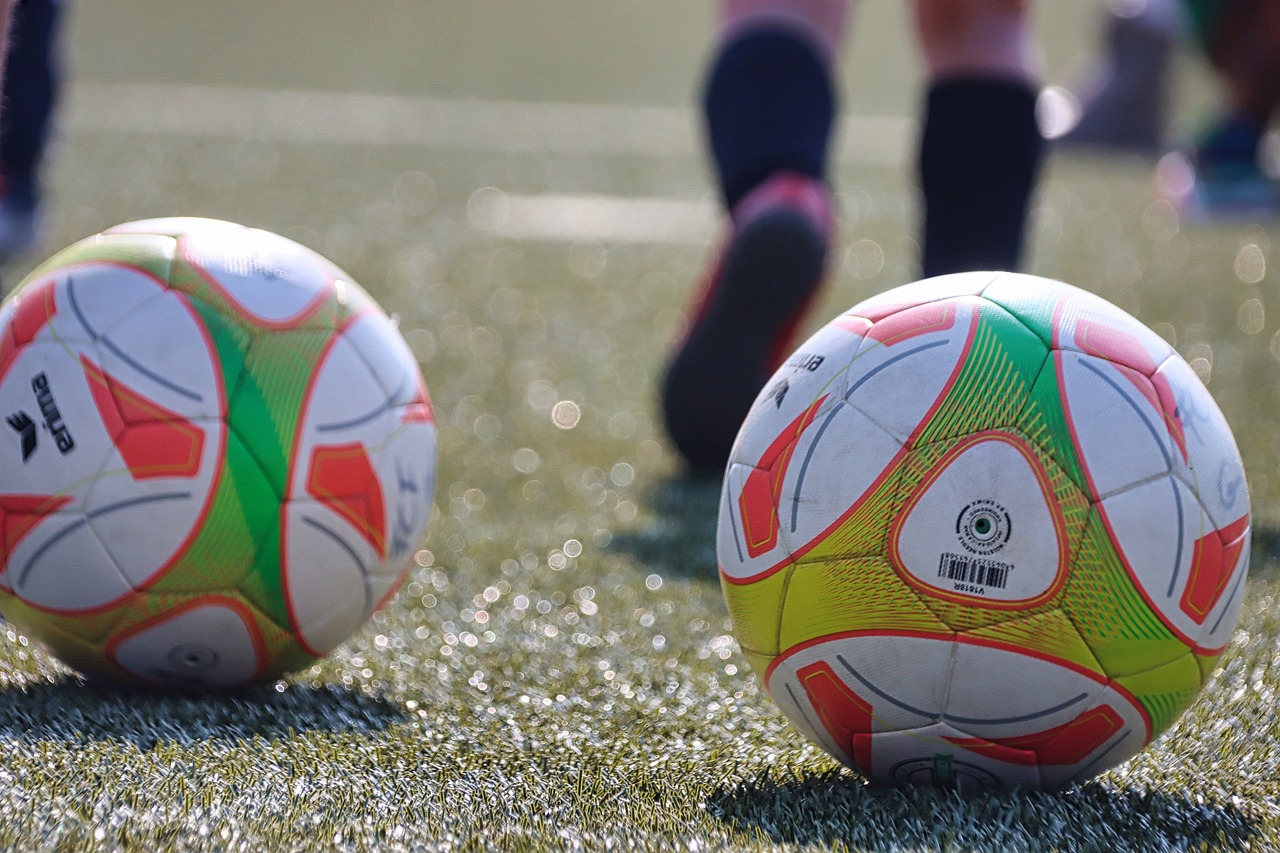
Practicing Self-Defense Techniques
When it comes to self-defense, the old saying "practice makes perfect" couldn't be more accurate. Mastering self-defense techniques is not just about learning a few moves; it's about building muscle memory and confidence through consistent practice. Imagine trying to ride a bike without ever having practiced before—you would likely wobble and fall! The same principle applies here. To effectively defend yourself, you need to train your body and mind to react instinctively in high-pressure situations.
One of the most effective ways to practice is through repetition. Just like a musician practices scales or an athlete drills plays, you should regularly go over your self-defense techniques. This could mean practicing strikes, blocks, or footwork in front of a mirror or with a partner. The more you repeat these movements, the more natural they will feel. Over time, these techniques will become second nature, allowing you to react swiftly when it matters most.
Additionally, it's vital to incorporate realistic scenarios into your practice sessions. This means role-playing different situations where you might need to defend yourself. For instance, you could practice defending against grabs, chokes, or even surprise attacks. By simulating these scenarios, you develop not only the physical skills but also the mental fortitude to handle stress and make quick decisions under pressure.
Finding the right training is also crucial. Not all self-defense classes are created equal. Look for programs that emphasize practical techniques, situational awareness, and stress management. A good instructor will not only teach you how to execute moves but will also help you understand the psychological aspects of self-defense. This could include recognizing potential threats and knowing when to de-escalate a situation versus when to engage.
To help you find the best self-defense training for your needs, consider the following criteria:
| Criteria | Importance |
|---|---|
| Instructor Experience | High |
| Class Size | Medium |
| Variety of Techniques | High |
| Focus on Real-Life Scenarios | High |
| Student Testimonials | Medium |
Lastly, don't underestimate the value of community support. Engaging with others who have similar goals can motivate you to stay committed to your training. Join local self-defense groups or online forums where you can share experiences, ask questions, and find training partners. Remember, self-defense is not just a solitary journey; it's about building a network of support that can help you grow.
- How often should I practice self-defense techniques? It's recommended to practice at least a couple of times a week to maintain and improve your skills.
- Can I learn self-defense online? Yes, there are many online resources and classes available, but hands-on practice with a partner is essential for mastering techniques.
- What if I feel intimidated in a class? Many people feel this way at first. Look for beginner classes or supportive environments where everyone is learning together.
- How do I know if a self-defense class is right for me? Attend a trial class if possible, and assess whether the techniques taught align with your personal safety goals.

Finding the Right Training
Choosing the right self-defense training can feel a bit like searching for a needle in a haystack. With so many options out there, how do you know which one is the best fit for you? First off, it’s important to understand that self-defense isn’t a one-size-fits-all solution. Different styles and techniques resonate with different people, and what works for one person may not suit another. So, what should you consider when seeking the perfect self-defense class?
Start by evaluating your personal goals. Are you looking to build confidence, learn practical techniques, or perhaps get fit while learning to defend yourself? Identifying your primary motivation can help narrow down your options. For example, if your main goal is to learn practical techniques, you might want to look for classes that focus on Krav Maga or Brazilian Jiu-Jitsu, as they emphasize real-world self-defense scenarios.
Next, consider the instructor's credentials and experience. A good instructor should not only be skilled in self-defense techniques but also have the ability to teach effectively. Look for trainers who have experience in real-life situations, as they can provide valuable insights that go beyond just the techniques. It might be helpful to ask about their background and any certifications they hold. A few key questions to ask include:
- What is your experience in self-defense?
- Do you have any certifications in martial arts or self-defense training?
- Have you ever had to use these techniques in a real-life situation?
Another essential factor is the class environment. A supportive, encouraging atmosphere can make a world of difference in your learning experience. Attend a few trial classes if possible, and pay attention to how the instructor interacts with students. Are they patient and attentive, or do they seem rushed and dismissive? A positive learning environment will not only make you feel comfortable but will also enhance your ability to learn and retain new skills.
Additionally, think about the class structure. Some people thrive in a more traditional martial arts setting, while others prefer a more modern approach that focuses solely on self-defense techniques. Look for classes that offer a mix of practical drills, sparring, and theoretical knowledge, as this combination can provide a well-rounded self-defense education.
Finally, consider the location and schedule of the classes. It’s crucial to choose a training center that is convenient for you. If a class is too far away or scheduled at inconvenient times, you might find it challenging to commit. Consistency is key in mastering self-defense techniques, so ensure that you can realistically attend the sessions.
In summary, finding the right self-defense training involves a combination of understanding your goals, evaluating instructor credentials, assessing the class environment, considering the structure of the classes, and ensuring convenience. By taking the time to research and reflect on these factors, you’ll be well on your way to selecting a self-defense program that not only meets your needs but also empowers you to feel safer and more confident in your daily life.
Q: How long does it take to learn self-defense?
A: The time it takes to learn self-defense varies from person to person. With consistent practice, you can start to feel more confident in your skills within a few weeks, but mastering techniques can take months or even years.
Q: Do I need to be physically fit to start self-defense training?
A: No, you don’t need to be in top shape to begin self-defense training. Many classes cater to all fitness levels, and as you train, you’ll naturally improve your physical condition.
Q: Is self-defense training suitable for everyone?
A: Yes! Self-defense training is beneficial for people of all ages and backgrounds. It can empower you, boost your confidence, and teach you valuable skills that can be applied in real-life situations.

Role-Playing Scenarios
When it comes to self-defense, theory alone won't cut it. You need to get your hands dirty—figuratively speaking, of course! Role-playing scenarios are a fantastic way to immerse yourself in realistic situations where you might need to defend yourself. Think of it as a rehearsal for the unexpected; it’s about preparing your mind and body to react instinctively when the pressure is on. Imagine being in a high-stakes situation where every second counts. Wouldn’t you want to be ready?
Role-playing allows you to practice various self-defense techniques in a controlled environment, helping you build not only muscle memory but also confidence. You can simulate different types of attacks—whether it’s a surprise grab from behind or an aggressive confrontation on the street. The beauty of role-playing is that it can be tailored to your specific needs and concerns. You can even invite friends or family to join in, making it a fun and engaging way to learn. Plus, it creates a supportive atmosphere where you can learn from each other’s experiences.
During these scenarios, it's crucial to focus on a few key elements:
- Realism: The more realistic the scenario, the better prepared you’ll be. Try to mimic real-life situations as closely as possible.
- Variety: Don’t just stick to one type of attack or defense. Mix it up! Practice against various attackers, in different settings, and under different circumstances.
- Feedback: After each role-play, take a moment to discuss what worked and what didn’t. This feedback loop is invaluable for improvement.
Another aspect to consider is the emotional component of self-defense. When you're faced with a potential threat, your body reacts in ways you might not expect. Role-playing can help you experience those emotions in a safe space, allowing you to learn how to manage fear and anxiety. It’s like training for a marathon; the more you practice, the better you become at handling the emotional and physical toll of the race.
Incorporating role-playing into your self-defense training can also help you develop critical thinking skills. You’ll learn to assess situations quickly and make decisions that could potentially save your life. For example, if you're confronted by an attacker, you’ll need to determine whether to fight, flee, or seek help. Role-playing can help you practice these decision-making skills, giving you the tools to act swiftly and effectively when it matters most.
Finally, don’t forget to document your experiences. Keeping a training journal can help track your progress and highlight areas where you need improvement. Reflecting on your role-playing scenarios will not only reinforce what you’ve learned but also keep you motivated to continue honing your skills.
| Question | Answer |
|---|---|
| How often should I practice role-playing scenarios? | It's recommended to practice at least once a week to build and maintain your skills. |
| Can I role-play alone? | While it's beneficial to have a partner, you can also practice techniques and visualize scenarios alone. |
| What if I feel uncomfortable during role-playing? | It's essential to communicate your feelings. Adjust the intensity or take a break if needed. |
Frequently Asked Questions
-
What is self-defense?
Self-defense is the act of protecting yourself from harm using techniques that can include physical strikes, evasive maneuvers, and strategic thinking. It's about more than just fighting; it's about understanding when and how to respond to threats effectively.
-
Do I need to be strong to effectively defend myself?
No, strength isn't the only factor in self-defense. Effective techniques often rely on body mechanics, leverage, and targeting vulnerable areas of an attacker. Anyone can learn to defend themselves, regardless of their physical strength.
-
How can I improve my self-defense skills?
Practice is key! Regular training in self-defense classes helps build muscle memory and confidence. Additionally, role-playing scenarios can prepare you for real-life situations and improve your reaction time.
-
What should I do if I can't find a self-defense class?
If classes are hard to find, consider online tutorials or instructional videos that focus on self-defense techniques. You can also practice with friends or family to reinforce your skills and strategies.
-
Are there specific techniques for women in self-defense?
While self-defense techniques are universal, some may be adapted to address the unique situations women might face. It's essential to focus on techniques that utilize your body weight and leverage effectively, regardless of gender.
-
Can everyday objects be used for self-defense?
Absolutely! Items like keys, umbrellas, or even a bag can be used as improvised weapons in self-defense situations. The key is to think creatively about what you have available and how to use it to your advantage.
-
What are vulnerable areas to target in self-defense?
Common vulnerable areas include the eyes, nose, throat, and groin. Striking these areas can create an opportunity for escape. Learning where to strike can significantly increase your chances of defending yourself successfully.
-
How do I stay calm during a confrontation?
Controlled breathing is crucial. Practicing deep, steady breaths can help you stay focused and calm, allowing you to think clearly and react appropriately in high-pressure situations.
-
Is self-defense legal everywhere?
Self-defense laws vary by location. It's essential to understand the legal implications of defending yourself in your area. Familiarize yourself with local laws to ensure you know your rights and responsibilities.



















